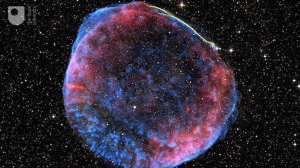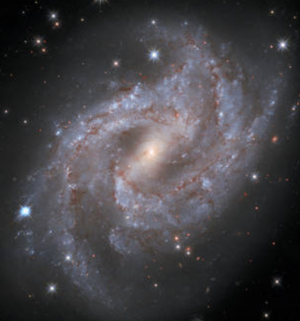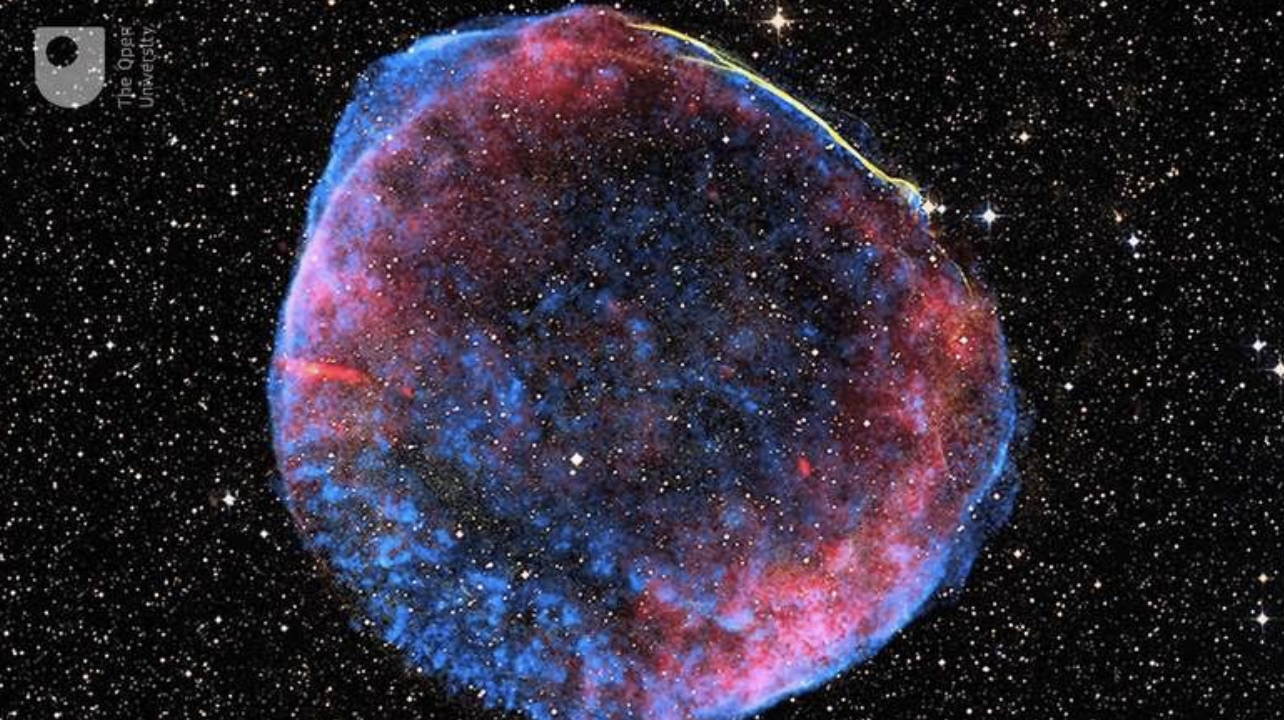Space News – Supernovae
November 23, 2020

During the last stages of a giant star, they explode into a massive and powerful supernova. At their brightest, the luminosity of a supernova is close to that of a whole galaxy. Supernovae are also a very important provider of heavy elements such as oxygen, iron, uranium, and gold. Some of these elements are only found in supernovae, iron for example. Aside from being huge, powerful, and bright, without supernovae, we wouldn’t be alive right now (“Supernova”).
Galaxy NGC 2525

At the beginning of October, it was reported that a supernova had faded away in the galaxy NGC 2525 which is 70 million light-years away from Earth. The supernova was first discovered in 2018 by an amateur astronomer, Koichi Itagaki, and has since also been observed by the Hubble space telescope (Garner).
Pictured to the right is a supernova. At the middle bottom left, next to galaxy NGC 2525, the brightest star is the supernova that was captured by the Hubble Telescope (Riess et al.).
There are many types of supernovae, this one being type Ia. Type Ia supernovae reach a peak brightness of 5 billion times brighter than that of our Sun. Type Ia’s are when a white dwarf, a remnant of a star that has exhausted all its fuel, accumulates material from its companion star. When a white dwarf reaches its critical mass, 1.44 times that of our Sun, the core becomes hot enough to ignite carbon fusion, fusing large amounts of oxygen and carbon in a short amount of time (Garner). The energy being released tears the star apart (see the model to the right for details).
When white dwarfs explode they give off around the same amount of light. Type Ia supernovae, are known as the ‘standard candles’ and are used by astronomers to calculate the distance to the supernova and then to their galaxies. This helps astronomer’s accurately measure the expansion rate of the universe, Hubble’s constant (Garner).
Works Cited
